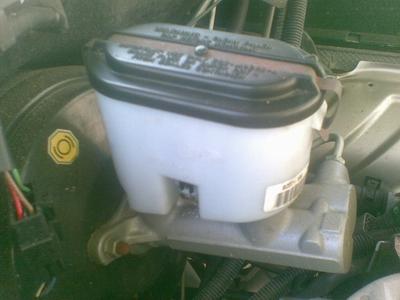Care must be taken when adding brake fluid. Brake fluid absorbs moisture and may cause a loss of braking performance if used from an open container. Always use NEW fluid from a sealed container. If the brake fluid level is low you might have worn out brake pads or worse still - a fluid leak!
Changing fluid at least every couple of years will preserve the life of brake system components (by removing accumulated water and other contaminants) and increase the overall reliability of the brake system.
WARNING: Brake fluid will damage your cars paint work. If contact with paint work occurs wash of with water immediately!.
In Australia brake fluid comes in a number of forms, standardized by the United States Department of Transportation (DOT).
DOT 2 is essentially castor oil; DOT 3, DOT 4, and DOT 5.1 are composed of various mineral oils, glycol esters and ethers; some are synthetic oil based. DOT 3 and 4 are the real paint eaters!
DOT 5 is silicone-based and does not absorb water. As of 2006, most cars produced in the U.S and Australia use DOT 3.

When buying brake fluid it's a good idea to check the vehicle's handbook or reservoir lid so you know what fluid is specified for the vehicle, as a DOT 4 fluid is not necessarily better than a DOT 3 fluid.
In theory a DOT 4 fluid can be used in place of a DOT 3 fluid, however in practice this isn't always the case, as some vehicle manufacturers have unique material specifications for brake components which makes them incompatible with fluids other than those specified. Especially Toyota.
DOT 3 fluid should not be used where a DOT 4 fluid is specified, as the boiling points are quite different. If a vehicle manufacturer has specified a DOT 4 fluid, it's probably because the vehicle is capable of generating high heat loads in the fluid and the higher boiling point is needed.
